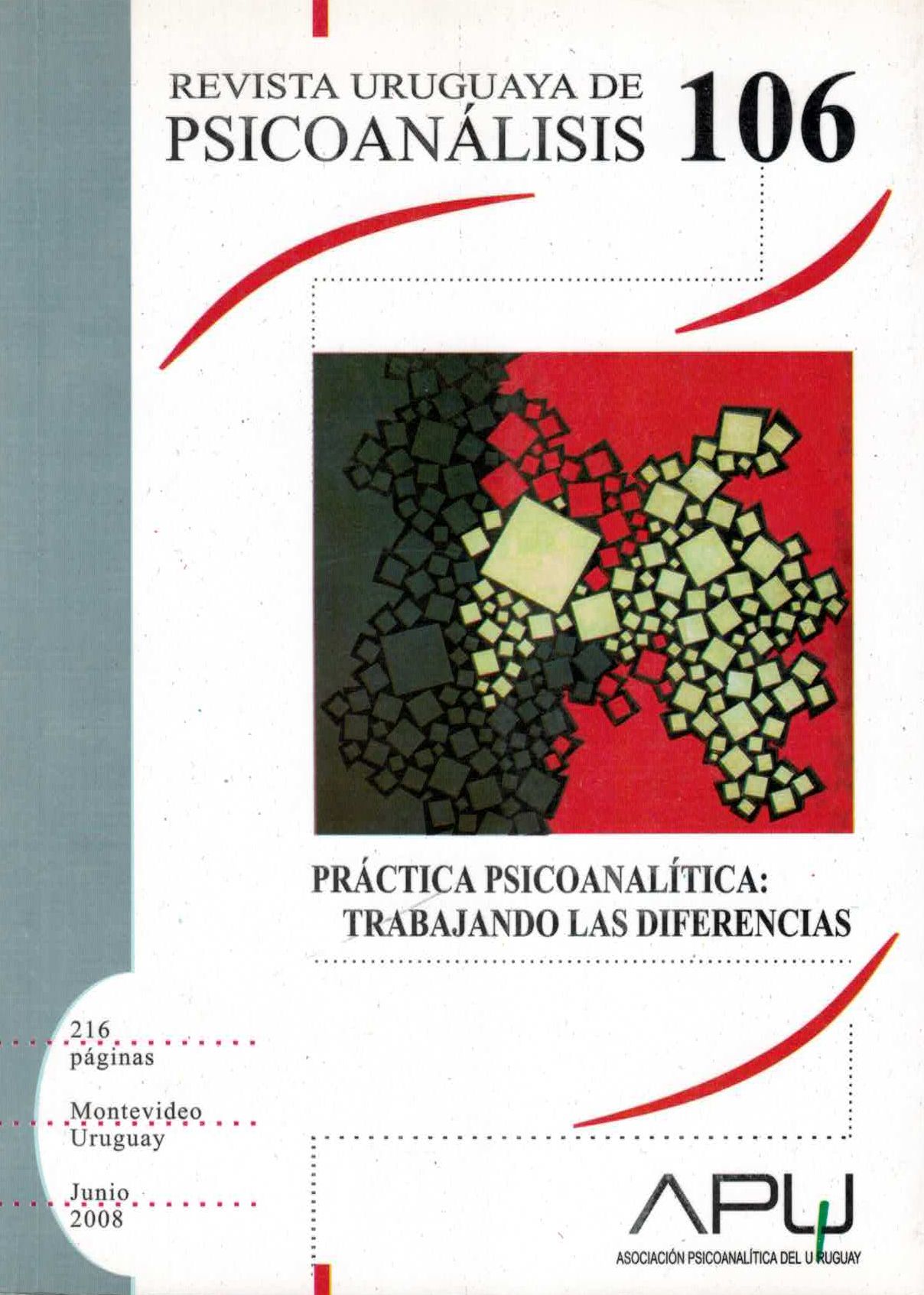A psychoanalytic practice or many?
Keywords:
cambio psíquico, encuadre psicoanalítico, técnica psicoanalíticaAbstract
The paper focuses on the fact that analysis has expanded way beyond the limits of the private consulting room and the treatment
of adult neurotic patients, at a high frequency and on an exclusively individual basis, giving rise to a series of consequences for our
practice. Working in a world which is very different from the one of the turn of the 19th Century and the beginning of the 20th, with
its own time and space, ideals and cultural norms related to sexuality, as well as with the changes in the structure of the family
and the society in its different spheres. Low frequency treatments or modifications of the setting have very frequently become
essential. As a result of all this, many questions arise. How can we ignore the situation of those patients who cannot devote three or
four hours a week to analysis? Or those who regularly travel on business? Or the analysts who have to cancel their sessions
periodically for the same reasons? Or the need to hold unscheduled sessions with patients who are severely disturbed? Should we
consider that every one of these situations implies substantial changes and we should talk about different psychoanalytic
practices? Unlike it is the case in other psychotherapies, in the work of analysis, the different elements of the technique are inseparably bound and sustained by an idea of subject in which the effects of the unconscious play a fundamental role for the psyche. A notion of the unconscious that has become more complex and rich as psychoanalysis has developed. This notion, together with the objectives of analysis, the rest of the key metapsychological concepts and the pillars of the technique, constitute invariants which support the idea of only one psychoanalytic practice which maintains its specificity regardless of the different possible kinds of work.
Downloads
References
BARANGER, W. y M. (1969). Problemas del campo psicoanalítico. Bs. As. Ediciones Kargieman.
BEDÓ, T. (1988) Insight, perlaboración e intepretación. Montevideo, RUP. 68.
BLEICHMAR, S. (1993) La fundación del inconciente- Bs. As. Amorrortu. Clínica psicoanalítica y neogénesis. (1999). Bs. As. Amorrortu.
BOLLAS, C. (1987) La sombra del objeto. Bs. As. Amorrortu, 1991.
DE URTUBEY, L. Le travail de contre-transfert. En: 54 Congrès des Psychoanalystes de langue française de pays romans. 1994.
FREUD, S. (1903) El método psicoanalítico. T. VII Bs. As. Amorrortu, 1981.
(1910) Perspectivas futuras de la terapia psicoanalítica T.XI. Bs. As. Amorrortu, 1981.
(1913) Sobre la iniciación del tratamiento. T. XII. Bs. As.Amorrortu, 1980.
(1924) El problema económico del masoquismo. T.XIX. Bs. As. Amorrotu.
(1933) La descomposición de la personalidad psíquica. Conferencia. 31 T. XXII. Bs. As. Amorrortu Ed. 2001.
(1937) Análisis terminable e interminable. T. XXIII. Bs.As. Amorrortu Ed., 2001.
GREEN, A ( 2003). Ideas directrices para un psicoanálisis contemporáneo.Bs. As. Amorrortu Ed. 2005.
HEIMANN, P. On countertransference. En: Int. J. Psa. T. XXXI, 1950.Fanny Schkolnik
LAPLANCHE, J. (1987) Nuevos Fundamentos para el psicoanálisis. Bs. As. Amorrortu Ed. (1989).
(1992 La prioridad del otro en psicoanálisis. Bs. As.Amorrortu Ed. 1996.
MACALPINE, I. The development of the transference. En: Psychoanal.Q. XIX, 1950.
M’UZAN, M DE. (1994) La boca del inconciente. Bs. As. Amorrortu Ed. 1995.
NEYRAUT, M. Le transfert. Francia. Presses Universitaries (1974).
RACKER, H. ( 1981) Estudios sobre técnica psicoanalítica. Bs. As. Ed.Paidós.
ROSEMBERG, B.(1991) Masoquismo mortífero y masoquismo guardián de la vida. Valencia, Editorial Promolibro. (1995).
ROUSSILLON, R. Le plaisir et la répétition. DUNOD. París. 2001.
SCHKOLNIK, F. (1994) El trabajo de interpretación. En: Publicación Coloquios de Colonia del Sacramento. Ed. Trilce, Montevideo.
(1999) ¿Neutralidad o abstinencia? En: RUP 89.
Representación, resignificación y simbolización En: Rev.de Psicoanálisis, Número Especial Internacional. Bs. As. 1998/1999.
(2007) El trabajo de simbolización. En: RUP. 104.



 This work is licensed under a
This work is licensed under a 